Unable to afford Rs 500 for studio rent, the daughter of an anganwadi worker and ward boy father says breakers like her could have harboured Olympic dream with government support and adequate funding
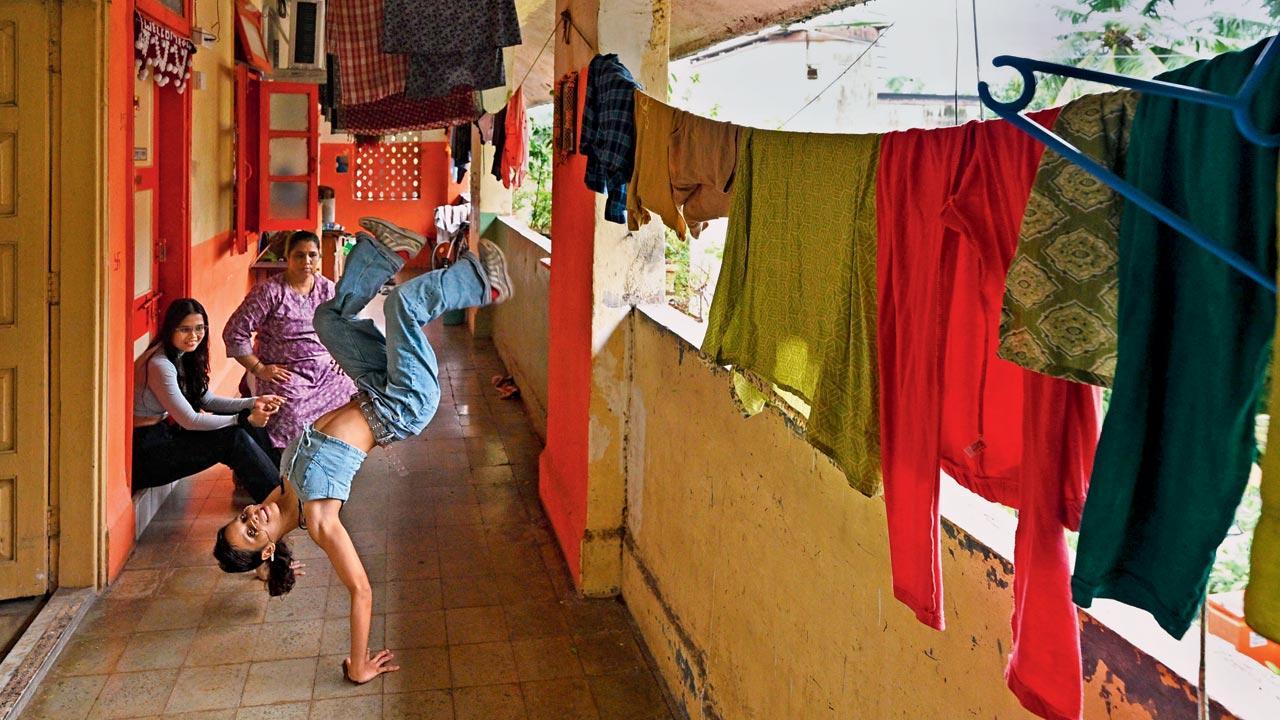
Ex-national breaking champ Siddhi Tambe, 20, shows mid-day a ‘freeze’ move at her 1RK Bandra East home which she shares with mother Sneha, father Sumedh and sister Shraddha. Pic/Rane Ashish
This week, as India tunes into the 2024 Paris Olympics hoping to witness a sporting triumph for the nation, Indian breakdancers are staring at a monumental loss. For the first time, breakdancing or breaking is now recognised as an Olympic sport, all set to make its debut at the ongoing Games. But, despite a thriving scene in India, not a single Indian breaker has qualified.
ADVERTISEMENT
When the news broke in 2020 that breaking had been recognised as an Olympic sport—at the same level as wrestling, shooting and hockey—there was excitement in the community about the visibility and exposure it would bring to their craft. The country’s top breakers—referred to as B-boys and B-girls—put in hours of practice every day, only to go home and put in the same number of hours trying to research how they could make their way to the Olympic stage. It wasn’t until a couple of years later that they realised they didn’t have a fighting chance.
“If talent and hard work was all it took, Indian breakers would already have been in Paris, but getting to the Olympics requires funding and government support. We have neither,” says Siddhi Tambe, 20, ace B-girl whose stage name is Bar-B.
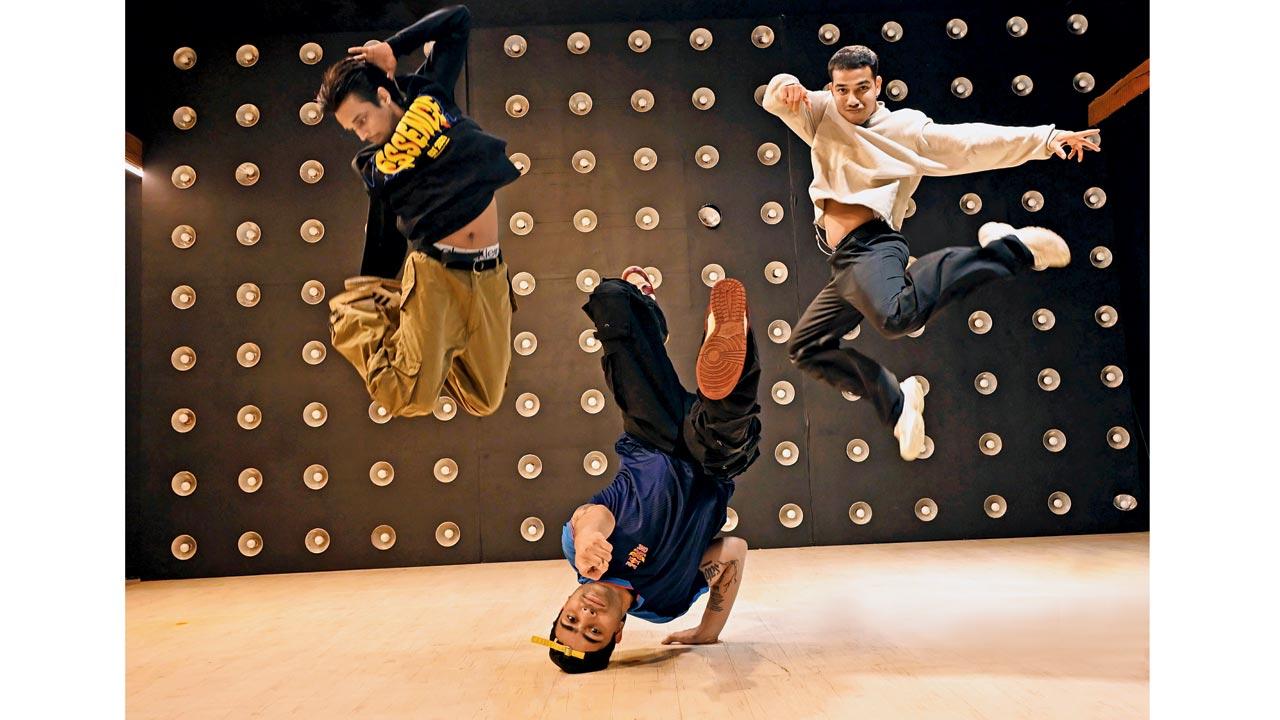 (From left) Raman Kumar Dubey aka B-boy Fusion, Arif Chaudhary aka B-boy Flying Machine and Rajan Yadav aka B-boy Risk jam together at a dance studio in Andheri West. Pic/Satej Shinde
(From left) Raman Kumar Dubey aka B-boy Fusion, Arif Chaudhary aka B-boy Flying Machine and Rajan Yadav aka B-boy Risk jam together at a dance studio in Andheri West. Pic/Satej Shinde
Tambe knows a thing or two about hard work and struggle. mid-day meets her at her one-room-kitchen home in Kalanagar, Bandra East, where she lives with her anganwadi worker mother, and father who works as a ward boy at south Mumbai’s Bombay Hospital. Tambe has returned home from Sathaye College in Vile Parle, where she is in the final days of completing a BSc in Botany. After hours spent in the lab for practicals, she usually takes a quick nap before heading out again to practice breaking for four hours every day. Today, she forgoes her sleep to show us a few moves. Tambe is lean, almost deceptively fragile, and has shadows under her eyes from an unrelenting schedule. Despite that, there is a restless energy to her, an excitement to show us all she can do.
It’s pouring outside, so Tambe offers to show us a few “freeze” moves inside her home. The room is too cramped to show the more complex power moves from her repertoire, and it’s a testament to her muscle control that she doesn’t tumble into the television or kick her family seated cross-legged inches from her as she flips mid-air, lands on one hand, and holds that position for photographs.
Her mother Sneha, and sister Shraddha watch, worry writ large on their faces. “Siddhi has had some issues with her wrist and leg recently. They ache when she practises for long periods. We’re a bit scared that she may be injuring herself. She does complicated moves and it puts a lot of pressure on her body. We can’t stop her because she is so passionate about breaking, but we will consult a doctor soon,” Sneha says.
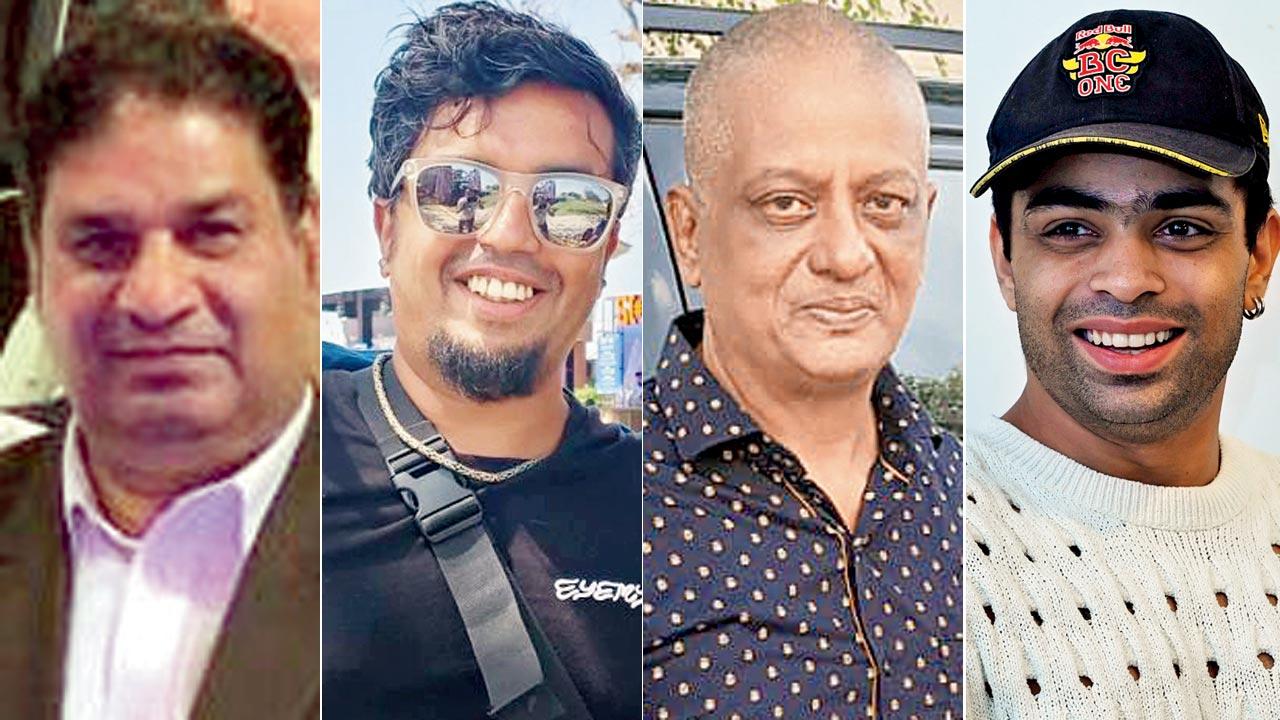 Rajeev Mehta, Nikhil Udupa, Biswajit Mohanty and Arif Chaudhary aka B-boy Flying Machine
Rajeev Mehta, Nikhil Udupa, Biswajit Mohanty and Arif Chaudhary aka B-boy Flying Machine
There is no stopping Tambe. “Breaking is everything to me, I can’t live without it. If even a single day goes without practice, I feel empty.” All that drilling has paid off. She has not only won the national breaking championship in India, but has also gone on to represent the country in Japan, Hong Kong, New York. She was in Russia last month. “Breaking has given me a lot—an identity, recognition, confidence, and even though there is limited money, it has given me the chance to help my family financially too,” says the B-girl.
Tambe’s next destination is Taiwan, where she hopes to be the first Indian B-girl to win an international title. But before she can even step onto the arena for the dance battle, she has to fight for funding to get to the host country. This time, she is being sponsored by Indian conglomerate Welspun World’s philanthropic arm, Welspun Foundation, which runs an initiative to support women athletes from challenging backgrounds.
“Technically, B-boys and B-girls who win the national championship in India should be sent by the government to represent India at foreign events, but we were told to manage funding on our own,” Tambe says, adding that each trip can cost anywhere from Rs 50,000 to Rs 1.5 lakh.
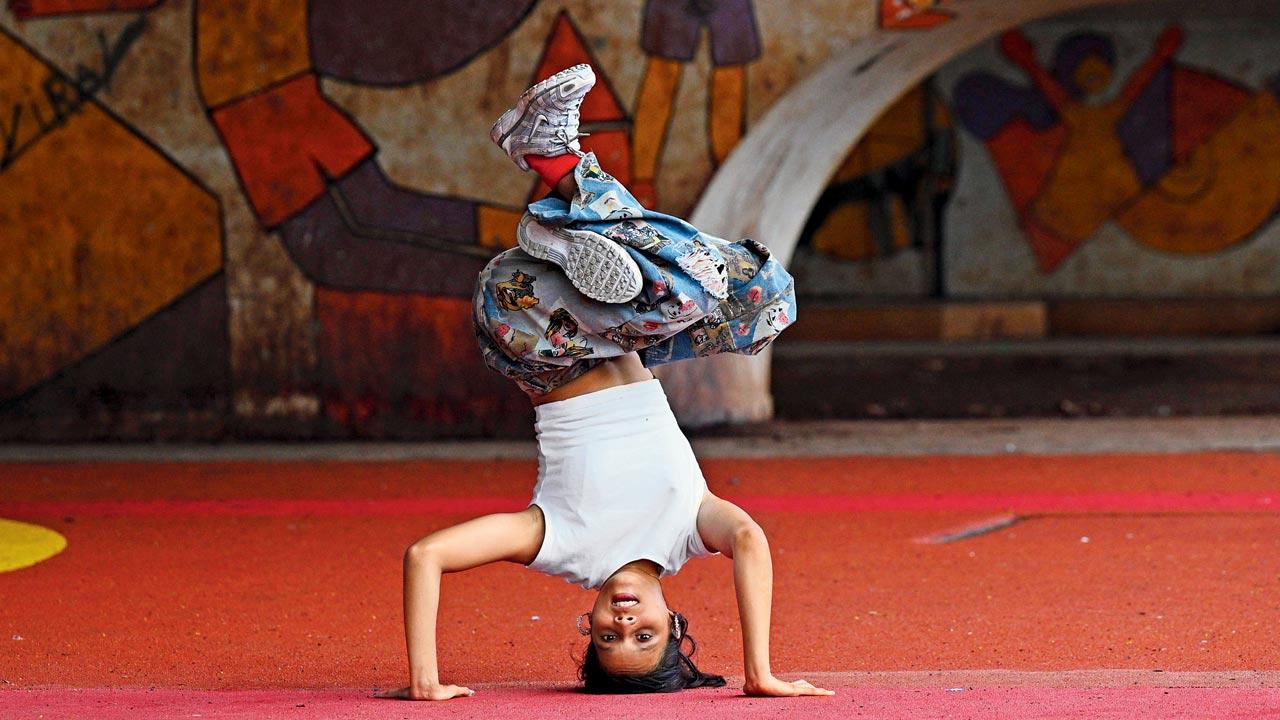 Siddhi Tambe aka B-girl Bar-B busts some moves under the Santacruz flyover. Pic/Rane Ashish
Siddhi Tambe aka B-girl Bar-B busts some moves under the Santacruz flyover. Pic/Rane Ashish
The same gripe is echoed by all the top breakers in the country mid-day speaks to. The biggest name among them is Jogeshwari’s Arif Chaudhary aka B-boy Flying Machine. “Countries like Japan, which have a less evolved scene compared to the US and Europe, have made significant strides, making it to the Olympics in both men’s and women’s categories. Their country’s support is visible in their contingent—they wear their country’s tracksuits and have assigned physiotherapists, and coaches on the spot. We, on the other hand, are on our own,” he says.
To qualify for the Olympics, one needs to get podium positions in at least 10 such events. He adds, “I have participated in three. The main crunch was funding; I couldn’t take part in all of them,” he says. “If we manage a sponsor who takes care of our stay and travel, well and good. Otherwise, we depend on ourselves.”
Breakdancing originated in the US in the ’70s, in bloc parties held on the streets of Bronx, a Black community-dominated borough of New York City, where it became one of the main pillars of the hip-hop movement. Hip-hop was a form of rebellion for the original proponents, as well as a way for them to express themselves and build community. In a direct parallel in India, when breaking made its way here about 25 years ago, it found its most ardent students among those battling social and economic injustices, especially in ghettoised settlements like Dharavi, which has the dubious distinction of being Asia’s largest slum.
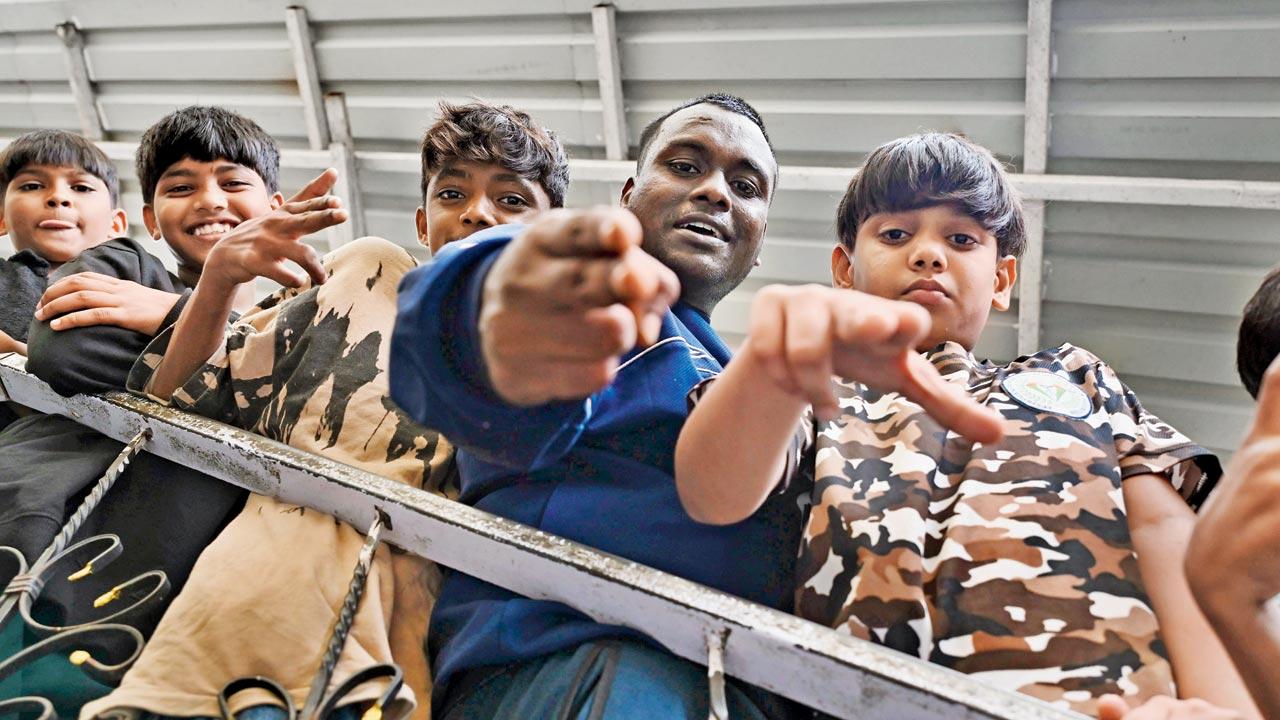 Akash Dhangar aka B-boy Akku is passing on his knowledge of the hip-hop sub-culture to the next generation of Dharavi kids at the Hip Hop Paathshala at Shri Ganesh Vidya Mandir High School, Dharavi. Pic/Ashish Raje
Akash Dhangar aka B-boy Akku is passing on his knowledge of the hip-hop sub-culture to the next generation of Dharavi kids at the Hip Hop Paathshala at Shri Ganesh Vidya Mandir High School, Dharavi. Pic/Ashish Raje
The regulatory body that organises the national championships, the Breakdance Federation of India (BDFI), is also very new, having been established only in 2021.
It functions under the aegis of the Amateur DanceSport Federation of India (ADSFI), which in turn is yet to be officially recognised as a national sports federation as per the sports ministry website. Until this process is completed, neither will the sport get government funding, nor can Indian breakers think of competing at the Olympics. On the international front, however, ADSFI is in the clear—it is affiliated to the World DanceSport Federation (WDSF), which in turn is recognised by the international Olympic Committee (IOC).
Biswajit Mohanty, secretary general of BDFI and ADSFI, tells mid-day, “We had applied to the Indian Olympic Association [IOA] for official recognition three years ago, back when Rajeev Mehta was the secretary general of the committee. We had even paid R3 lakh for the affiliation. But the IOA has not issued us an official confirmation.”
The federation has sent several reminders to the IOA, as well as the sports ministry, Mohanty alleges. He adds that he had last year also met Anurag Thakur, then the sports minister, and submitted an application to fast-track the federation’s confirmation ahead of the Olympics, to no avail.
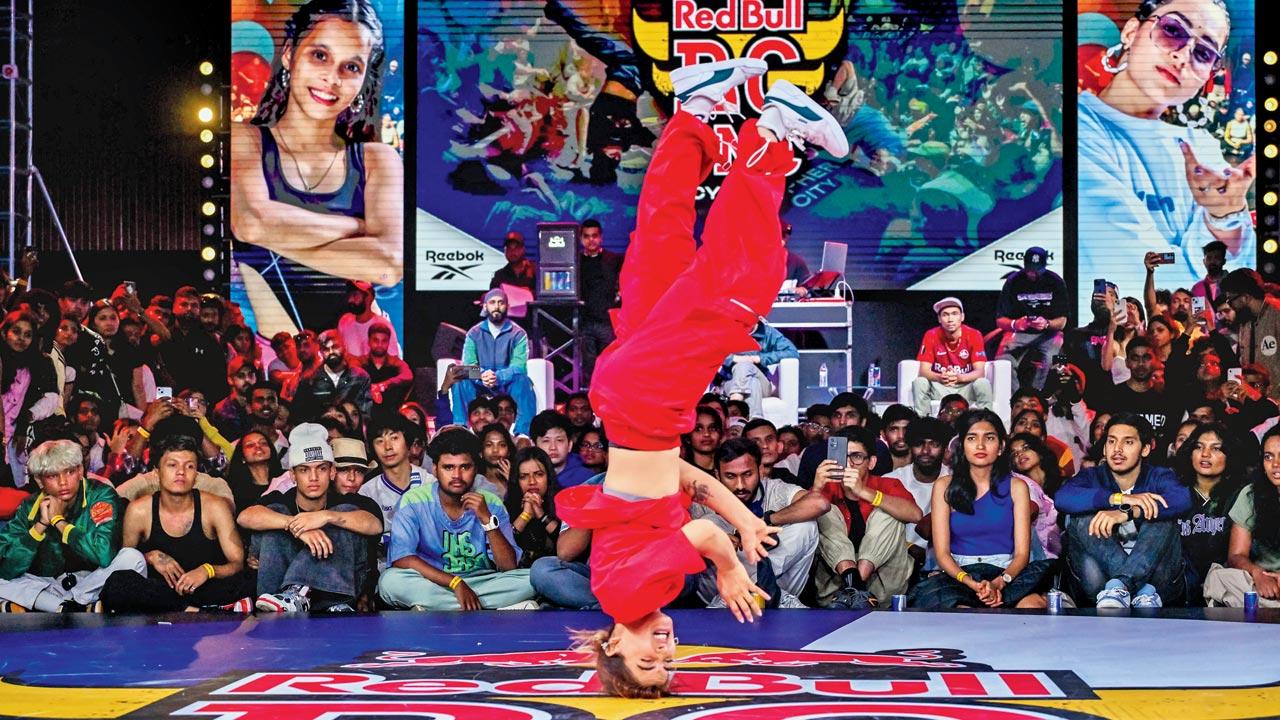 Jaipur’s B-girl Glib aka Simran Ranga, winner of Red Bull BC ONE Cypher India 2024. Pic/Focus Sports and Red Bull
Jaipur’s B-girl Glib aka Simran Ranga, winner of Red Bull BC ONE Cypher India 2024. Pic/Focus Sports and Red Bull
Mohanty airs another grouse, saying Indian breakers were also robbed of their chance to compete at the Asian Games in China in 2023. “Four Indian breakers had qualified for the Asiad and had even received their visa and Asian Games accreditation. Then, at the last moment, the sports ministry decided to drop the team because they did not have a good enough global ranking. But if they don’t get to compete internationally, how will they build their ranking? The IOA decided that our breakers would not be able to bring medals home,” he says.
With IOA officials currently in Paris for the Games, mid-day’s attempts to reach out for a comment have gone unanswered. However, former IOA secretary general Mehta confirms to this paper, “ADSFI had applied for affiliation and paid Rs 3 lakh. I had granted provisional affiliation to the federation before the Olympic committee was changed. As per the IOA charter, the provisional grant should have been discussed by the general house and then given confirmation. I don’t know why the new committee has not done it.”
Former IOC member and ex-IOA chief Narinder Batra says, “Breaking is a new-generation sport that should be given more weightage in the current sports scene in India. While there may have been federation-related discrepancies as the sport is relatively new and the organisations may not be fully functional, it’s also the duty of the government to push the IOA to back a new sport as it has many promising players that can bring laurels to the country on an international level.”
Breakers complain that communication from the federation has been unclear, and that tournaments are mismanaged. They are referring to the 2024 national tournament conducted last month in Chennai.
Mohanty admits, “The cheques for the prize money for three people had bounced. We issued a warning to the state-level organisers. The athletes have now been paid,” he says, adding, “Our intention is to help these athletes. We don’t make any money from this. We charge the players nominal amounts for the federation membership [Rs 1,000] and tournament registration [R1,200]. For the Chennai tourney, revenue from registration fees was Rs 5 lakh, but we spent R11 lakh on the arena, as well as food and accommodation for the athletes.”
Tambe, though, says that ADSFI-hosted national tournaments are poorly organised, and neither have they provided breakers with international exposure, nor are the cash prizes worth her while. Instead, for Indian breakers, the biggest and most crucial competition of the year is the Red Bull BC One Cypher India, she says.
Austrian energy drinks giant Red Bull is one of the biggest supporters of extreme sports across the world, organising championships and sponsoring athletes from disciplines as varied as cliff diving and mountain biking. In India, they had started hosting the breaking competition as far back as 2015.
“I have stopped competing in the ADSFI championships altogether. I had won the tournament two years in a row in 2021 and 2022, but it did not do anything for me. They host the event at such shabby venues, and the organisers themselves don’t seem to understand the intricacies of breaking, says Tambe, contrasting this with
Red Bull’s tourney: “Red Bull, from the very beginning understood breakdancing, as they had been organising competitions across the world. Besides, they treat breakers like stars. There is no prize money, but the arenas and facilities are amazing, and they also provide international exposure to the winners, who get to represent India and compete against winners from other countries.”
While Tambe was the B-girl champion at Red Bull’s national-level tourney in 2022, Chaudhary is the only Indian breaker to be the India champion for five years, and is now also sponsored by the Indian arm of the energy drink brand as he is by German multinational Puma.
“Red Bull saw that I stood out in the scene. I had already won the Red Bull BC championship five times and had also triumphed in dozens of battles across India and abroad. Winning the prestigious Red Bull BC One India Cypher earned me the title of India’s top B-boy and the opportunity to compete in the Red Bull BC One World Finals. I was also active in the national circuit, judging shows and mentoring the younger B-boying crop. It was years of hard work before I got noticed by the brand,” says Chaudhary.
The community has also found support from Indian conglomerate Welspun Foundation since 2021, coinciding with the announcement that breaking would be included in the 2024 Olympics. “Our decision to invest in this sport was driven by a desire to make a meaningful impact on women athletes who were not receiving sufficient backing. As also suggested by our programme manager [sports marketing and CSR agency] Meraki Sport and Entertainment, we recognised the immense social impact of breakdancing, especially as some of its practitioners come from humble backgrounds with limited means,” says the foundation in a statement.
It has been supporting Tambe since 2022, and prior to that had also sponsored former Bengaluru B-girl Jo or Johanna Rodrigues in 2021. The athletes have been provided with “financial assistance for high-performance training, nutrition, medical expenses, sport-specific apparel, equipment, and opportunities to participate in both domestic and international tournaments,” says the statement.
As for Indian breakers missed opportunity at the Paris Olympics, the Foundation representative says, “Any new form of sport needs to go through its complete growth cycle. While other sports have had multiple four-year cycles to develop and refine their athletes’ skills, breaking is still in its early stages and lacks sufficient awareness and structured development…The sport [breaking] has just found its feet, and we are confident that with the right support it can really flourish because we do have some incredible talent in the country.”
Rajan Yadav, aka B-boy Risk, has been on the scene for over a decade and is also Chaudhary’s associate. “Nobody promotes the sport,” he clucks his tongue. “They think it’s just regular dance. Nobody gets the extremity of it.” He adds that the cash prizes are minimal, often to the tune of Rs 20,000 to Rs 25,000, with B-boyers receiving only a fraction of the total prize money due to various deductions like TDS, handler fees, etc. “We do it out of sheer passion, but deep down, we crave the recognition we deserve.”
Rajan also highlights the cultural challenges within the B-boying community in India. “Since the sport is not officially recognised, neither is formal training available, there is a lot of aggression and ego among B-boyers. Sometimes, dance battles turn violent because of the power and energy involved.”
However, Chaudhary believes that the true turnaround will come from within the tightly-knit breaking community. “It’s mostly friends from the community who teach each other. If that’s not the case, passionate chaps pick up the skills themselves by watching videos and working hard.”
“Now, it’s the people who are leading the B-boying and breaking scene that will do something about the community. I organise a B-boying competition titled Essence, in Mumbai.” This event has seen five editions in the city and is now expanding across India, even attracting international participants from Kazakhstan and Nepal. “Some people were competing in breaking at a smaller scale [called jams], but on a high level, the scene was never very active in India,” says the ace breaker.
Chaudhary emphasises the cultural significance of breaking. “The battle culture, which is popularised in commercial films and music videos, shows only rap battles. But this face-off culture was born in the B-boying community. Battles may be perceived as entertainment for many, but for us, it’s a culture, a passion, a lifestyle. The closest thing in the music community is the metal genre. You don’t get into it half-heartedly. You have to give it your life.”
Fellow B-boy Wildchild (Eshwar Tiwari) also hosts a popular competition titled God Level Jam.
Raman Kumar Dubey (B-boy Fusion), a B-boyer with over seven years of experience, believes that mainstream exposure could significantly boost the scene. “A film on breakers, like Gully Boy, which gave a massive push to the Gully rappers’ scene in Mumbai, could do wonders for the OG hip-hoppers.”
Nikhil Udupa, the founder-director of 4/4 Experiences, an entertainment think tank that organises concerts and music events, may be an outsider, but he has observed the breaking community closely. The breaking events he holds in Mumbai are mid-level competitions, attracting about 200-300 participants from various cities, with cash prizes ranging from Rs 20,000-30,000. “Our association with breaking is that we are partners in the Essence IP, a venture by bboyer Arif Chaudhry. The overall event prize pool is in the range of over Rs 1.5 lakh,” he says.
He says the frequency of breaking events at a small scale is quite high, but on a bigger scale where bigger sponsors are involved, the scene is still evolving. Udupa adds that adequate venues with the right facilities are one of the biggest struggles in organising such events. “Breaking walks the fine line between sport and dance. It gets challenging to fit this hybrid format into available spaces. If such spaces are not available in Mumbai, it's possible that in smaller cities, and towns, the facilities could be poor. A lot of such events happen in community halls or dance studios, which are good for smaller events. But it’s difficult to organise such events at a larger scale (with over 300-400 participants),” he adds.
Mohanty, however, warns that if breakers who stop participating at ADSFI championships and solely compete in unofficial events organised by the community, they will not be able to qualify for the Olympics. “They need to remember that whether it’s the Asian Games or the Olympics, they can only compete at that level through the federation,” he says. The focus should be on demanding action and funding from the government, he insists. Mohanty points out, “Before they can even compete on such a level, the government should provide funding for the basics—diet, coaches, physiotherapy, training arenas. For breakers, flooring is very important, because that can impact their moves as well as risk of injury. Right now, the breakers don’t even have a space where they can train in safely, with appropriate flooring and protection from the elements.”
This is a problem mid-day witnesses first-hand as Bar-B, keen to show off her skills, suggests we go someplace where she will have more space to bust some moves. Where does she usually train? “In parks, or sometimes under a flyover in Santa Cruz,” she says nonchalantly. “People stare sometimes, but I am used to it now. These spaces are free. Renting a studio would cost me R500 an hour. I cannot afford to shell out R2,000 every day,” she explains.
Right now, the park is muddy, and the flyover’s underbelly is wet and mucky. “Breakers can perform anywhere, even on the streets. Breaking and hip-hop are, after all, born from the streets,” she says as she enters a recreational space under the flyover and performs a series of backflips and sweeps.
There’s a reason why breaking attracts people from economically weaker sections, says Chaudhary: “It doesn’t require any equipment. Your body is your equipment and you can practise anywhere, even on the streets.” Chaudhary himself hails from a middle-class family, but it wasn’t until he got sponsors that he could afford to rent studios. “I practised in the parks near my house for about seven years. When I became a pro, I started visiting dance studios,” he recalls.
The only things Indian breakers don’t lack are talent and commitment. Even with limited resources, many of them have gone to represent India at international events, like B-boys Wildchild (Eshwar Tiwari) and Tornado (Ramesh Yadav), and B-girls Glib (Simran Ranga) and Jo (Johanna Rodrigues).
Curiously, most of the top performers are from Mumbai, where the Indian hip-hop movement is said to have exploded in the mid-2000s, when “OG” B-boy Heera (Netarpal Heera Singh) would fly down from the US every years for two months and teach youths in Dharavi how to breakdance. The movement took off from there, with each student teaching others about the sub-culture, until social media exploded and anyone could learn how to dance from the Internet.
One of the youths Singh had taught was Dharavi-born Akash Dhangar aka B-boy Akku, who says hip-hop changed his life at a time when he was battling prejudice both, because of his caste, and because of where he lived. “With B-boying, I was able to rise beyond that prejudice. Breaking and hip-hop support a completely different way of life, it sets you apart and everyone comes together in a community of our own, where we are all equal. It’s not that there aren’t rich people doing hip-hop, but within the community, when the rich and the slum-dwellers meet, there is no difference,” he says.
His conviction was strengthened all the more after the release of the film, Slumdogs Millionaire in 2008. The pejorative “slumdog” incensed Dhangar, and this led to the formation of a hip-hop collective that he named SlumGods as a counter-narrative.
Dhangar is no longer actively B-boying, but he remains very much in the community, choosing instead to pass on his learnings to the next generation of kids in Dharavi through the Hip Hop Paathshala, which he runs at Shri Ganesh Vidhya Mandir High School during after-school hours. Since he founded the Paathshala last year, Dhangar is teaching his eighth batch of students, with 30 children. He instructs them on the four pillars of hip-hop—B-boying, rapping, beatboxing and graffiti.
Six days a week, the kids show up at the school, push the benches aside, and drill with Dhangar for a minimum of two hours, until they are dripping with sweat. And yet, the smiles never fade from their faces. For many kids, the Hip Hop Paathshala has been life-changing too, as an all-consuming passion that leaves no room for violence or addiction. “Some people might not like the mainstream image of hip-hop, which comes from depictions of violence on TV, or from expletive-laden rap. We tell all the parents that that is not the hip-hop we teach here. Here, we teach kids how to think for themselves, how to be more productive. We impart them with confidence, but also teach them humility. And we teach them the importance of education. Many of the kids have been performing better at school since they started coming here,” says Dhangar, who has taught a total of 150 children so far.
The dream? In a few years, one these kids might represent India at the Olympic breaking competition. Dhangar says, “There are a lot of factors that came in the way of Indian breakers going to the Olympics this time, but in the future, why not? No one cared about the javelin or knew the name Neeraj Chopra until he won at the Olympics [in 2020]. That is what the Olympics can do for breaking in India.”
ADSFI, too, claims that it is now focusing its limited resources on training the next generation of breakers at camps being organised across the country. “We have quite a few B-boys and B-girls who are in their prime now, but the competitive careers of breakers tend to be shorter than many other sports, because it is such an extreme sport that takes a toll on the body. We are focused on our goal of building a strong breaker contingent for future Asian Games and Olympics.”
Missing out on the Paris Olympics is a setback, Dhangar agrees, but adds, “Hip-hop is about never giving up. No change happens overnight. Even if it’s not our generation that goes to the Olympics, we will be the ones to mentor the one that will.”
Aug 9-11
Dates on which Olympic breaking competitions will be held
Rs 1,000
Annual fees for membership of the Breaking Federation of India
1970s
Period when break-dancing was born on the streets of New York’s Bronx
32
No. of breakers who have qualified for Olympics from across the world
Breaking into the Olympics
. Breaking was first introduced to the Youth Olympics in Buenos Aires in 2018
. Following its success there, the decision was made to add breakdancing to the line-up for the Paris 2024 Summer Olympics
. Amid reports of breaking being left off the programme for the 2028 Games in Los Angeles, WDSF president Shawn Tay has told the media the organisation is “profoundly disappointed”
. Tay says that the breakdancers’ performance in Paris this fortnight will define the future of the dance sport at the Olympics, and adds that WDSF has already begun its campaign for breaking to be added to the 2032 Brisbane Olympics
Qualifying countries
As per the Paris Olympics website, breakers from 15 countries or provinces have qualified for the Olympics this year: Japan, Kazakhstan, Italy, Morocco, France, South Korea, Netherlands, Australia, USA, Ukraine, China, Lithuania, Canada, Chinese Taipei and Portugal. In addition, one breaker from Afghanistan has qualified as a member of the Refugee Olympic Team.
 Subscribe today by clicking the link and stay updated with the latest news!" Click here!
Subscribe today by clicking the link and stay updated with the latest news!" Click here!







